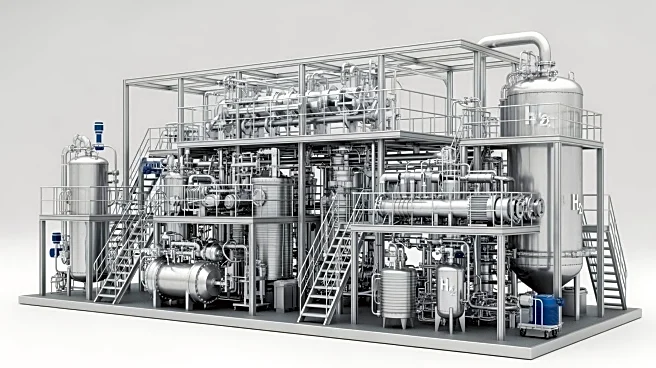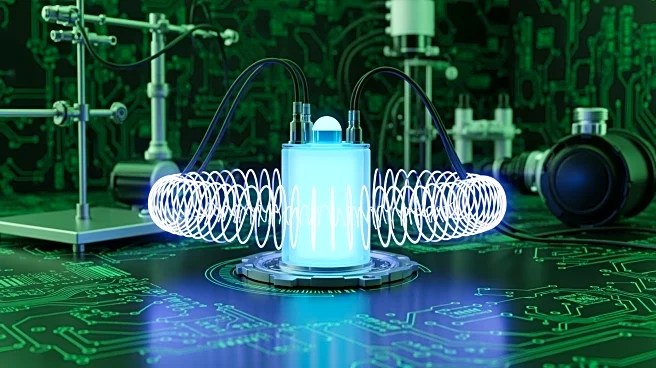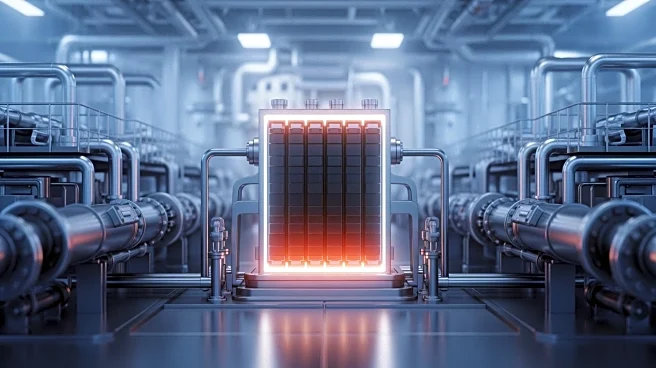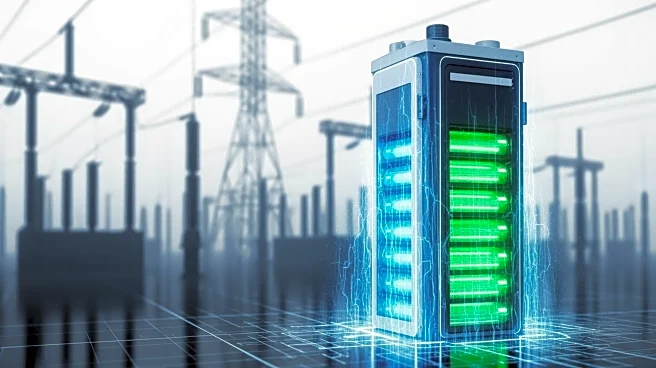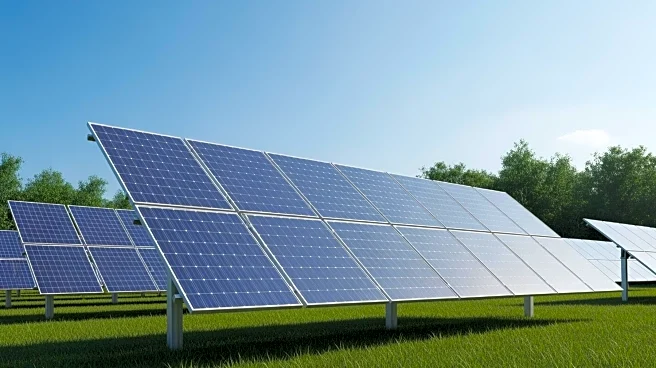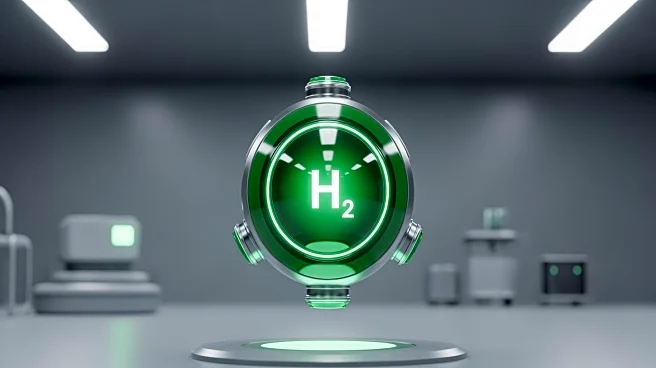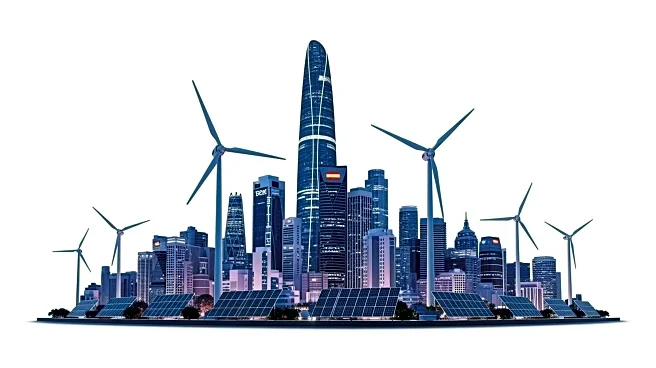What's Happening?
Researchers at the Korea Institute of Machinery and Materials (KIMM) have achieved a significant breakthrough in hydrogen energy production. They have developed a 20-kilowatt-class solid oxide electrolysis
cell (SOEC) system that operates with an 83% electrical efficiency over 3,000 hours. This system utilizes waste heat from industrial sources, such as steel and chemical plants, to convert heat into steam, reducing electricity usage by 15% compared to traditional methods. This innovation lowers hydrogen production costs by approximately 25%, making it more viable for large-scale applications. The system has demonstrated reliability under real-world conditions, including power fluctuations and steam supply interruptions.
Why It's Important?
This development is crucial for advancing clean energy technologies, particularly hydrogen, which is essential for decarbonizing heavy industries and powering next-generation fuel cells. By reducing the cost and increasing the efficiency of hydrogen production, KIMM's system could significantly impact the global energy landscape, decreasing reliance on fossil fuels and reducing carbon emissions. The ability to produce hydrogen affordably and efficiently is a key step towards achieving carbon neutrality and supporting the hydrogen economy, which is vital for sustainable industrial practices and long-haul transport solutions.
What's Next?
KIMM aims to further improve the system's efficiency beyond 85% and reduce hydrogen production costs to approximately $2.20 per kilogram. Achieving these goals could position this technology as one of the most affordable clean hydrogen solutions globally. The successful scaling of this system could lead to widespread adoption in various industries, promoting a shift towards cleaner energy sources and supporting global efforts to combat climate change.
Beyond the Headlines
The integration of underutilized energy sources, such as industrial waste heat, highlights the potential for innovative approaches to energy production. This technology not only advances the hydrogen economy but also contributes to broader efforts in energy efficiency and sustainability. The development of such systems could encourage further research and investment in similar technologies, fostering a more resilient and environmentally friendly energy future.
